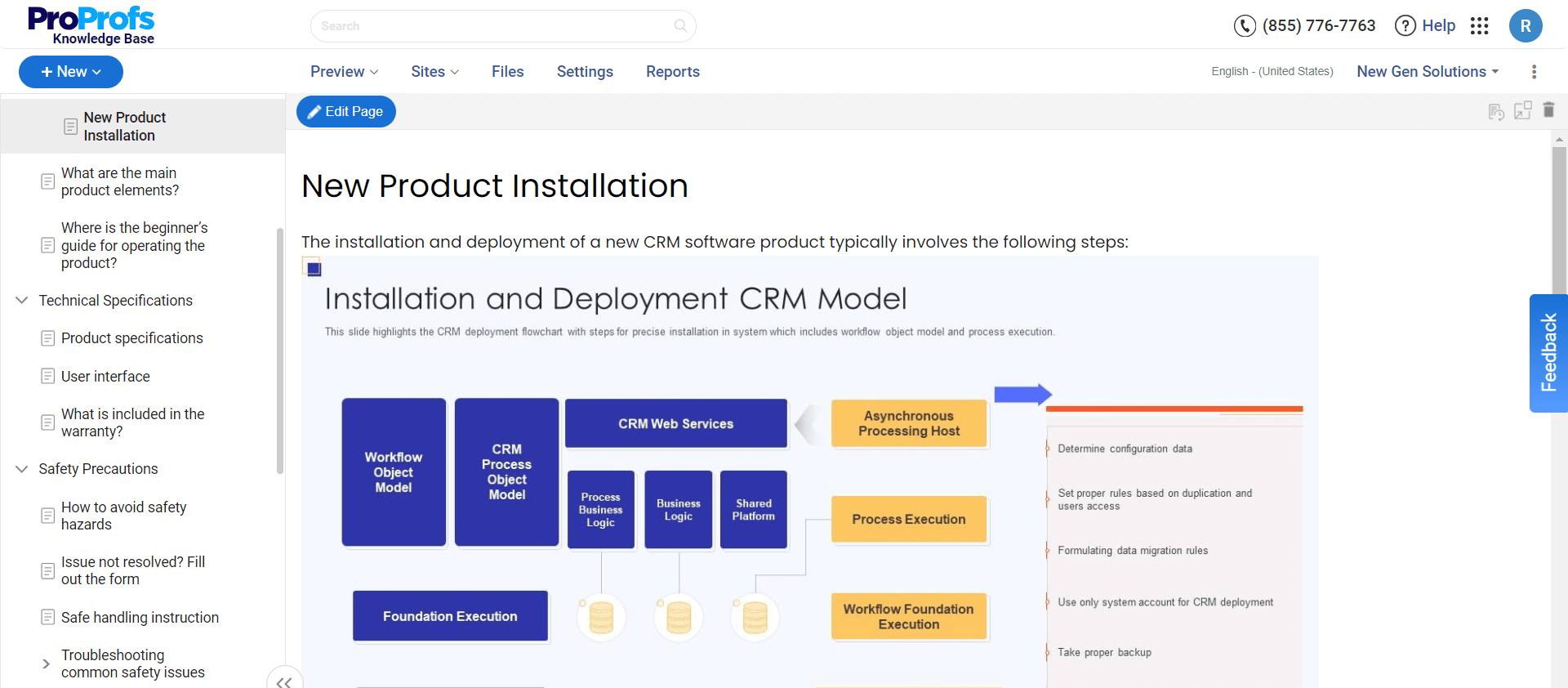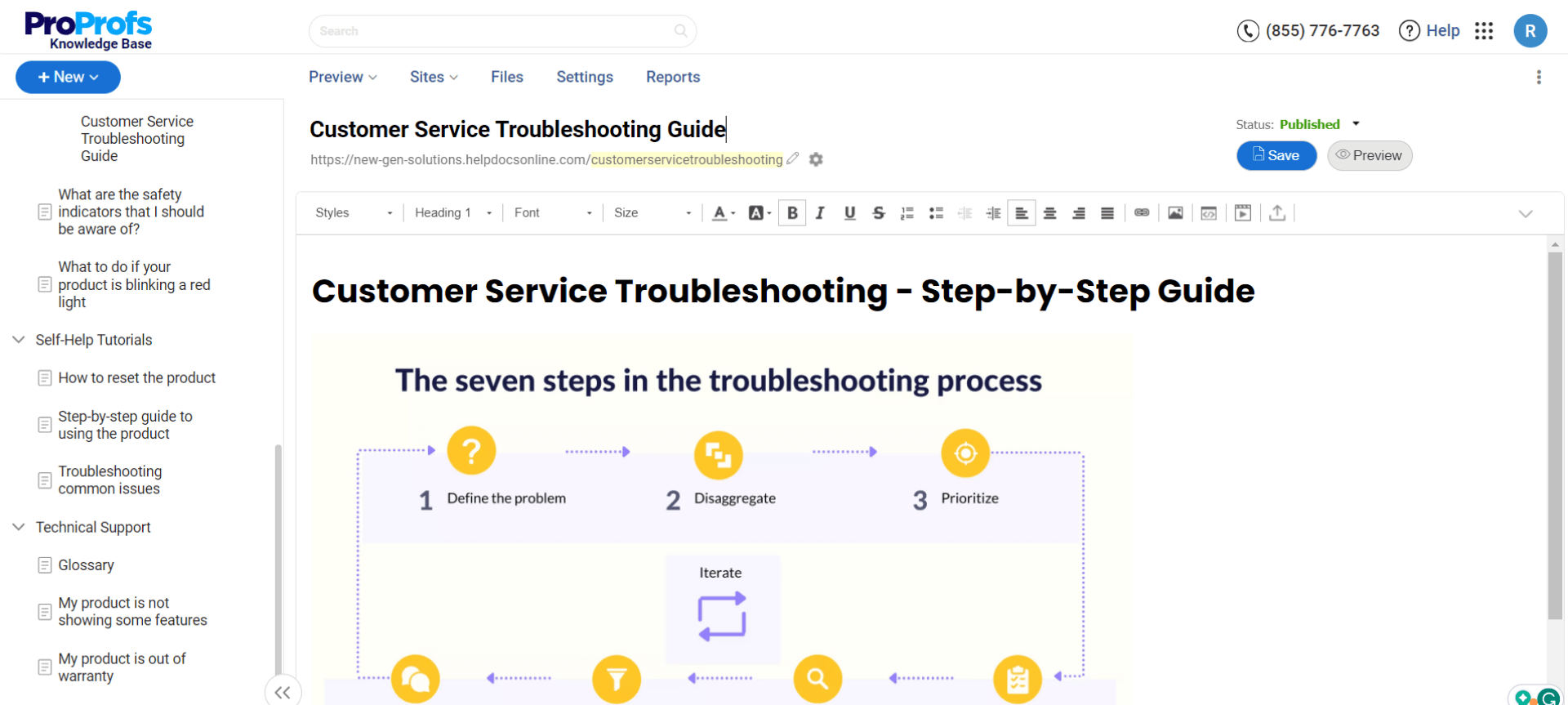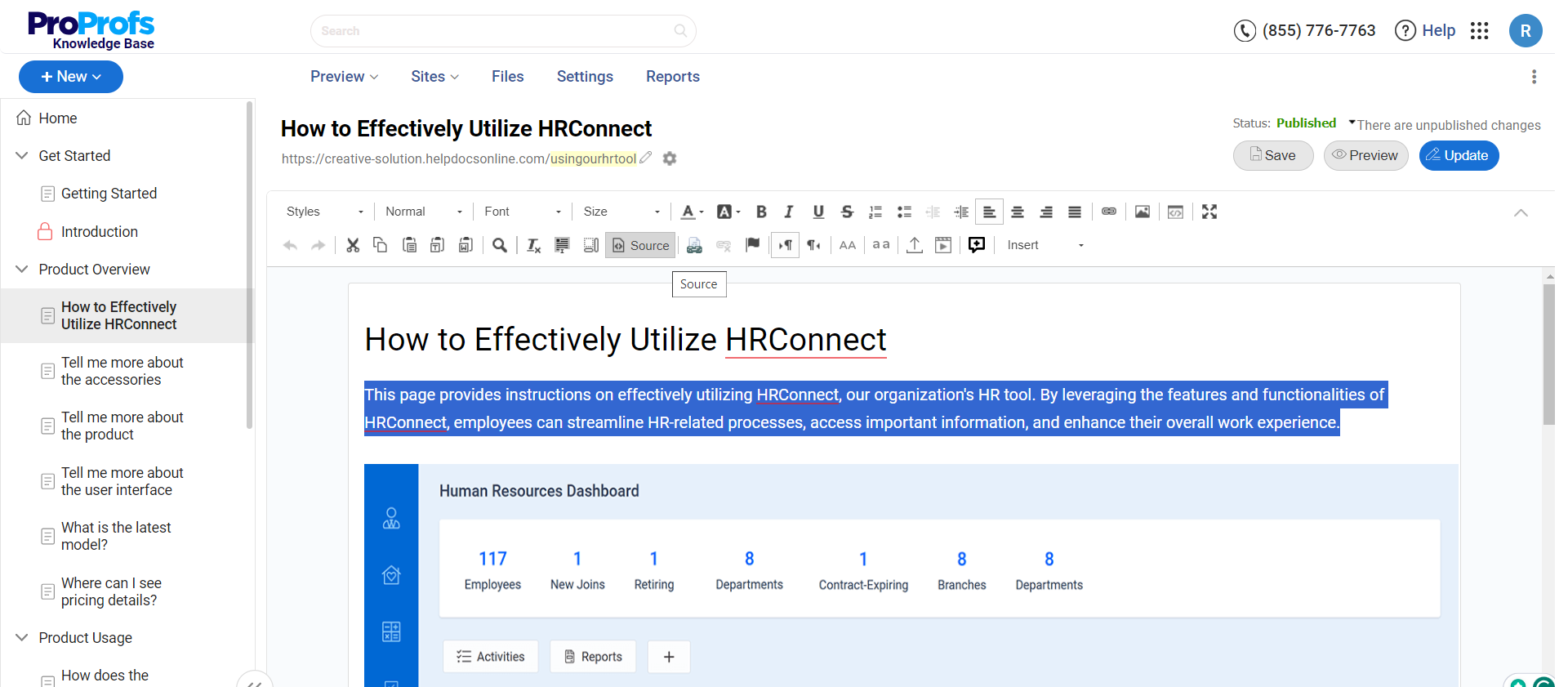
In the ever-evolving dimension of software development, code documentation is an essential yet often overlooked part of the development process.
A study by GitHub highlights that incomplete or outdated documentation is a prevalent problem, affecting 93% of respondents and often leading to frustration among developers.
The need for code documentation arises from its ability to solve several critical challenges around knowledge transfer between team members, onboarding new developers, maintaining consistency in code practices, and ensuring the long-term maintainability of the project.
In this blog, we will discuss the types of code documentation and their importance and explore the challenges in creating them. We will also talk about the role of code documentation tools.
Related More: How to Create Online Documentation?
What Is Code Documentation?
Code documentation is an essential aspect of software development that comprises written text or annotations accompanying computer source code.
It serves several important functions, like explaining the code’s behavior, purpose, and logic and making the software easier for developers to understand, use, and maintain.
Effective documentation is essential for a project’s current and future stakeholders, ensuring the code remains accessible, navigable, and extendable over time.
Why Should You Document Your Code?
Code documentation is an essential practice in software development that serves the following functions for the present team working on the project and future developers who will interact with the code.
Enhances Understandability
Code documentation makes it easier for developers to understand the purpose and functionality of various components within a software project.
Well-documented code can significantly reduce the time it takes for someone new to the project to get up to speed.
Enables Collaboration
In team environments, where different developers work on the same codebase, documentation serves as a communication platform that guides developers on using and integrating other parts of the software.
It ensures that everyone understands the code’s functionality and architecture, which is essential for efficient collaboration and coordination.
Improves Maintainability
Over time, software needs to be updated, whether to add new features, fix bugs, or improve performance.
Documentation provides a valuable reference that helps maintainers understand how the existing code works, making it easier to modify or extend without introducing errors or unintended consequences.
Assists in Debugging & Troubleshooting
When issues arise, having documentation can significantly speed up the debugging process.
Developers can refer to documentation to understand expected behaviors and review how different parts of the system are supposed to interact, aiding in identifying where problems might be occurring.
Supports Knowledge Transfer
Software projects often undergo personnel changes, with new developers joining and others leaving.
Documentation acts as a repository of knowledge that ensures valuable information about the codebase is retained and accessible, reducing the dependency on any single individual and minimizing the impact of developer turnover.
Read More: Knowledge Transfer – What it is & How to Achieve it?
Encourages Best Practices
The process of documenting code enables developers to think more about the structure and design of their code, often leading to cleaner, more organized, and more efficient coding practices.
It also promotes standard conventions and patterns within the codebase, contributing to overall code quality.
Ensures Legal Compliance
Documenting code and software processes is essential for compliance in highly regulated industries.
Code documentation can provide evidence of compliance with standards and regulations, which is essential for software that handles sensitive data or operates in regulated sectors like finance, healthcare, and aviation.
Facilitates Testing & Quality Assurance
Write code documentation that includes details on how to set up environments, configure software, and execute tests, which are critical for quality assurance teams.
It allows for more consistent and effective testing processes, ensuring the software meets its quality benchmarks.
What Are the Types of Code Documentation?
Depending on how and for whom the documentation is crafted, different types of code documentation primarily target developers and technical teams involved in the software development process.
Internal Code Documentation
It involves comments and annotations within the source code itself. It provides immediate context for developers working on or reviewing the code. Internal documentation can be further broken down into:
- Low-Level or Inline Documentation: Comments written directly next to code lines that explain the logic and purpose of variables, functions, and algorithms.
This form of documentation is crucial for clarifying complex code blocks, algorithms, and decision-making logic.
- Block Comments: Larger sections of comments that describe broader sections of code, often placed at the beginning of a new function or module, providing an overview of its functionality and its role within the larger application.
For example, consider a simple JavaScript function with inline documentation:
| “`javascript // Calculates the sum of two numbers function add(a, b) { return a + b; // Returns the sum of a and b } “` |
Here, the comments explain what the function does and what the return statement achieves, aiding any developer who might work with this code in the future.
Related More: Internal Documentation: How to Create, Tips & Examples
External Code Documentation
External to the code, this type of code documentation provides an overarching view of the software’s structure and instructions for developers on how to interact with it, including:
- API Documentation: Detailed descriptions of APIs, including endpoints, methods, request/response formats, and usage examples. It’s essential for developers to use or integrate with the API. You can also use an API documentation tool for it.
- Architecture Documentation: High-level overviews of the system architecture, including diagrams and descriptions of different components and their interaction. This documentation is vital for understanding the system as a whole.
High-Level Documentation
Unlike inline comments that explain “how” code works, high-level documentation focuses on the “why” – the rationale behind design decisions, architectural choices, and the overall structure of the application. This type includes:
- Design Documents: Detailed explanations of the software design, including data models, system architecture, and interaction flows. They help maintain consistency and guide development efforts.
- Technical Specifications: Specifications outline the software’s intended functionality, performance criteria, and operational constraints. They serve as a contract between stakeholders and developers.
Walkthrough Documentation
It includes step-by-step guides and tutorials that take developers through specific processes, features, or pieces of functionality within the software.
It’s beneficial for onboarding new team members or educating developers on complex features.
Developer Guides & Tutorials

Focused on practical, hands-on instructions, these guides cover setting up development environments, adhering to coding standards, and contributing to the project.
They are essential for maintaining code quality and consistency across the development team.
Related More: How to Create Developer Documentation
Troubleshooting & FAQ Documents

Targeted towards solving common problems and answering frequently asked questions, this documentation helps developers quickly resolve issues without delving deep into the codebase.
Code Documentation Challenges
Code documentation, while crucial, presents several challenges that can hinder its effectiveness and maintenance. Let’s discuss these challenges.
Keeping Documentation Updated
Synchronizing between the documentation and the codebase becomes challenging as code evolves through new features, bug fixes, and refactoring.
Documentation can quickly become outdated if not routinely reviewed and updated, leading to confusion and misinformation.
Non-Uniform Documentation Practices
Inconsistencies in how the code documentation is written, structured, and updated across different parts of a project or among various projects can reduce the effectiveness of documentation.
This challenge is amplified further in environments with multiple contributors or when there are no strict guidelines for documentation.
Time & Resource Constraints
Writing clear and extensive documentation demands significant time and effort, which are often scarce in fast-paced development environments.
Prioritizing documentation alongside coding tasks can be difficult, leading to documentation being overlooked or rushed.
Balancing Detail & Clarity
Finding the right level of detail for code documentation is challenging. Too much detail can complicate documentation, while too little can leave users without the necessary guidance. Striking the right balance is essential for effective documentation.
Technical Barriers
The tools and languages used for documentation may pose barriers to some developers, especially if they require learning new syntax (as with markup languages for documentation) or juggling different software tools.
Measuring Effectiveness
Unlike code, where functionality and performance can be quantitatively measured, evaluating the quality and effectiveness of code documentation can be more subjective.
This makes it harder to justify the investment in documentation from an ROI (return on investment) standpoint.
Engagement & Motivation
Creating enthusiasm and commitment to documentation among development teams can be challenging.
Documentation is sometimes viewed as less rewarding than coding, leading to lower engagement and priority.
Code Documentation Best Practices
Adhering to best practices in code documentation is essential to maximize its effectiveness and ensure it serves its intended purpose throughout the software development lifecycle.
Let’s discuss some key best practices for the same.
Begin Documentation Early & Update Regularly
Start documenting your code at the start of the project and make it an integral part of your development process, not an afterthought.
Regular updates are important; as your code evolves, so should your documentation to ensure it remains relevant and accurate.
Ensure Accuracy & Clarity
Your code documentation should be clear and precise. Avoid ambiguity and ensure that your notes precisely reflect the current state of the code.
Misleading documentation can be more harmful than no documentation at all.
Use Long-Form Descriptions for Complex Logic
When documenting complex pieces of code or decision-making logic, use long-form descriptions.
Use these explanations to cover the reasoning behind certain decisions, the implications of these decisions, and how they affect the overall system.
Include Prerequisite Information & Use Descriptive Naming
Add any prerequisite knowledge or context needed to understand the code. This could involve references to external libraries, the expected state of the system, or dependencies.
Use descriptive and meaningful names for functions, variables, and other code elements to enhance readability and self-documentation.
Utilize Documentation Tools & Documentation as Code (DaC)
Use documentation software to streamline the creation and maintenance of your documentation. These tools can automate parts of the documentation process and help maintain consistency.
Adopting Documentation as Code (DaC) principles, where documentation is treated with the same care as code—using version control, peer reviews, and automated testing—can significantly improve the quality and reliability of documentation.
Incorporate Examples & Sample Code
Wherever possible, add examples and sample code snippets. These practical illustrations can clarify how APIs are used, demonstrate best practices, and provide clear, executable examples that readers can experiment with directly.
Enable Collaboration & Encourage Team Involvement

Documenting code should be a collaborative effort. Encourage contributions from all team members and foster a culture where writing code is valued.
Peer reviews of documentation, just like code reviews, can enhance its quality and accuracy.
Related More: Cross-Team Collaboration: Benefits, Best Practices, & Examples
Create Code Documentation to Streamline Software Development
Code documentation is an indispensable part of software development that not only facilitates smoother project transitions but also ensures long-term maintainability and usability of the codebase.
Despite the challenges discussed, such as document non-uniformity and technical barriers, developers can create a more sustainable and understandable code environment by adopting best practices, such as using descriptive naming and starting documentation early.
ProProfs Knowledge Base can help with that. Its WYSIWYG editor, complemented by a source code view, allows for seamless editing and formatting of technical content.
It also supports code syntax highlighting, making it easier to include code snippets clearly and legibly within your documents. This feature ensures that code is accurately represented and easy for readers to understand and follow.
FREE. All Features. FOREVER!
Try our Forever FREE account with all premium features!








